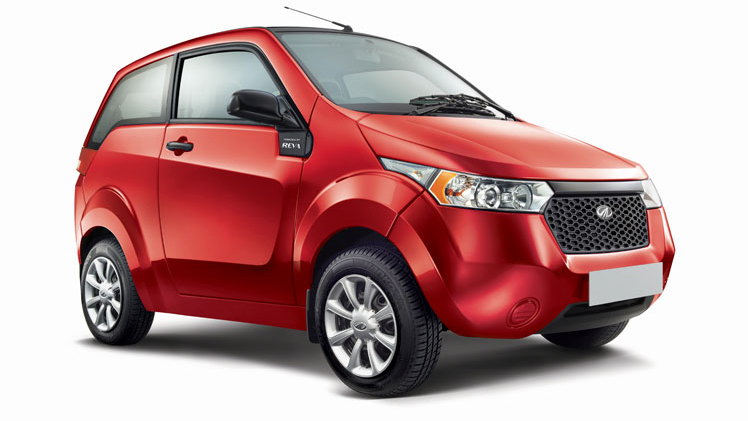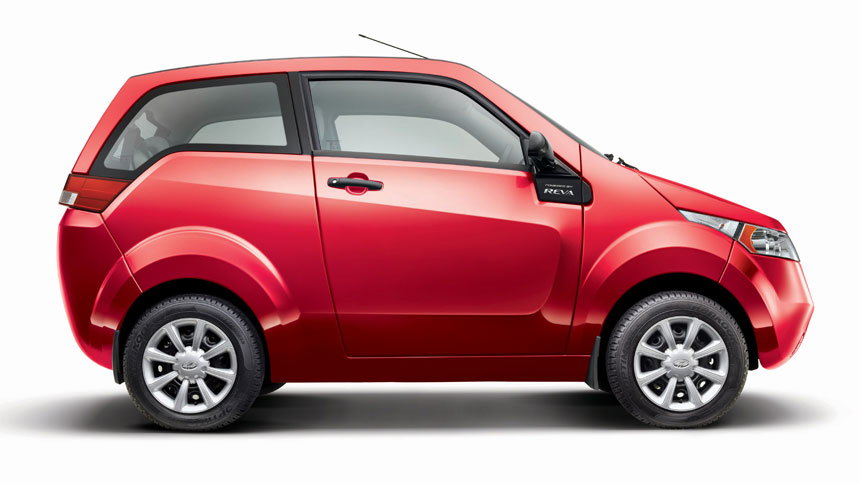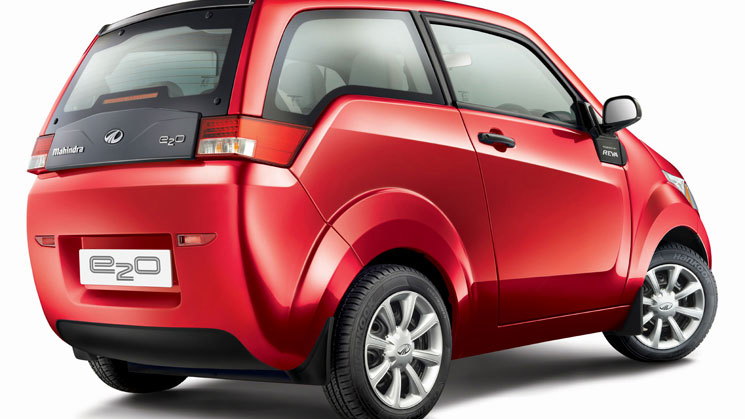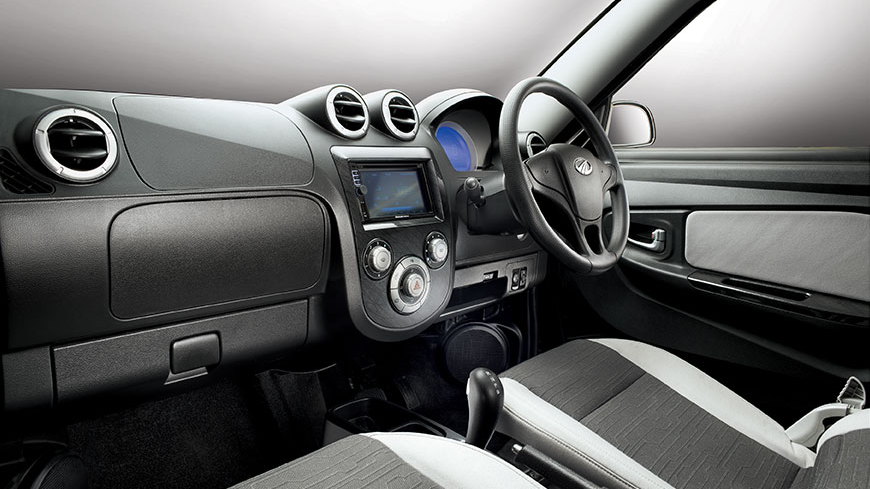It's called the Mahindra e2o, and you may recognise its previous name, the Reva NXR. The Reva name is already big in electric vehicle circles, though not necessarily for the right reasons--the last Reva was most commonly known as the G-Wiz.
In effect then, the e2o is the G-Wiz's successor. And the good news is, it's a little easier on the eye. Only a little, mind.
The styling--and it can be justified as styling, this time around--is far more modern than before, with the sort of crisp lines currently in vogue on larger vehicles. It even features what you might term "flourishes", with large wheel arch bulges, a prominent (if presumably superfluous) front grille, a rising waistline, and rear windows which cut away into the rear lights.
That's all helped ease the pain of its odd proportions, which are just as narrow and upright as the G-Wiz. Surprisingly, it's around 6 inches longer than a Scion iQ, but at six inches narrower and 2 inches taller the styling does its best to hide that extra length.
At least that means greater interior volume, and while the interior itself is a bit Korean-hatchback-circa-2000, it's again a vast leap over the previous car.
But, this being an electric car, it's the drivetrain we're most interested in.
That consists of a three-phase electric motor and a bank of lithium-ion batteries, good for 19 kilowatts (25.4 horsepower - the decimal point really matters here) and 62 miles of range respectively. A charge from the average Indian outlet will take around 5 hours.
Its 50 mph top speed won't trouble Teslas, but its refreshing to see a weight figure of only 1,830 pounds in this day and age. Regardless, doing 50 mph on Indian roads through Indian traffic is no doubt as much as any sane human should ever have to deal with, so a higher top speed is academic.
Safety and technology have traditionally been lacking on Indian vehicles, so the e2o stands out here also. Mahindra says the car's crumple zones "comply with European norms", while smartphone-controlled features and a dashboard-mounted touchscreen make it one of the more advanced cars on Indian roads.
The price? 5.96 lakh, which works out at almost exactly $11,000 at today's rates. That's after Delhi's government subsidy for electric cars has been taken into account--but still makes it one of the cheapest electric cars on sale anywhere.
It's still over four times the price of India's cheapest car, the Tata Nano, but Mahindra sees the e2o selling to "environment-conscious and tech-savvy" customers, most likely as a second car--a strategy not dissimilar from electric vehicles sold the world over.
+++++++++++



















